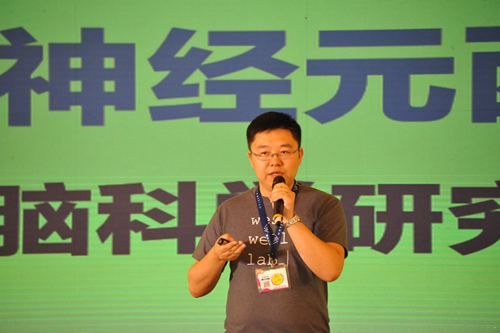It is understood that in the field of machine learning, "on-chip learning" is a big breakthrough in the current "On-Line Learning", which means that machine learning can be done directly on the hardware side. Through the continuous "self-learning" and "self-improvement" at the hardware level, high efficiency and low power consumption are realized. In the future, whether in mobile smart terminals, home smart terminals or big data dedicated servers, "on-chip learning" will show its unique and powerful advantages. "On-chip" independent learning style classification Abstract painting, Baroque, flower, interior, portrait, minimalism, pop art, surrealism... a variety of paintings and styles, dazzling. For ordinary people, even if you infiltrate the art for many years, it is not easy to separate the painting genre at a glance. Can the machine do all this? Since 2014, when Sergey Karayev and others of the California Institute of Technology have collected wiki-paintings, many teams around the world have joined the rapid identification and classification of machines to test the results of machine learning. Recently, Xijing Technology's Neuromorphic Laboratory (WNR) has achieved “on-chip learning†for the first time on a global scale, and tested this technology directly on the Wiki-paintings collection. The results show that the machine can automatically complete the classification of more than 1000 pictures in just one second, and the correct rate is close to 100%. At the exhibition site, Xijing Technology officially demonstrated the “on-chip learning†process in the WIKI system. After clicking on a few styles of painting and painting on the hardware side of the film, we hope to find the selected style and painting from the 10,000 oil paintings correctly and quickly. During the period, the chip can interrupt learning at any time to test the learning effect. As a result, we found that as the progress of chip learning progresses, the correct rate of oil painting recognition and classification will gradually increase until after a complete learning of 8 to 10 seconds, the recognition accuracy rate is close to 100%. "On-chip learning" has been slow in research The purpose of machine learning is to make machines have the ability to learn, recognize, and understand things similar to humans. From a global perspective, machine learning currently uses "online learning", which is a sequential, sequential learning process that continually modifies models and optimizes them. Many companies have tasted the sweetness of “online learning†and have made breakthroughs in artificial intelligence in the fields of vision, sound and big data. At the same time, the researchers have not stopped the study of "on-chip learning", because as long as this technology is implemented, learning and testing can be done directly on the hardware, so that the development of the basic algorithm is iterative, and the product upgrade has a shorter cycle. And higher efficiency and consume less energy. In fact, since the 1990s, a lot of research has focused on how to embed algorithms into the theoretical study of hardware, but at that time it was only for very simple waveforms, signal processing. Industrial Gelatin,Industrial Hide Gelatin Powder,Industrial Gelatin For Woodworking,Industrial Gelatin For Abrasive Paper Hebei Haodong Biological Technology Co.,Ltd. , https://www.hdgelatin.com
China's brain-like artificial intelligence has achieved "on-chip learning" for the first time in the world.